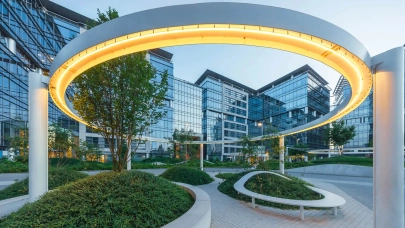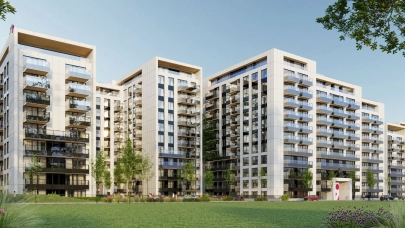Corporate interest in life sciences has been strong for the past decade, with $81.5 billion invested across EMEA since 2010 and job creation consistently above 5% year-on-year. However, 2020 was exceptional, with the EMEA region seeing corporate investment growth of 72% as companies on the front line of the global response to the pandemic ramped up their business activity. This points to the need for property owners and developers to consider the readiness of their assets to support the aspirations of fast-growing life science companies within commercial real estate; and for investors to pay close attention to emerging life science clusters.
Most new investment into the sector since 2010 has gone into the manufacturing of pharmaceuticals and medical devices, accounting for 59% of capital investment ($33.6 billion) ahead of R&D at 11.4% ($15.5 billion). Existing life science clusters have dominated corporate investment over the same period, accounting for 67% of activity across Europe, with the Republic of Ireland’s benign tax environment within the EU and multi-billion-euro support for the sector making it a magnet for corporate funds. Other well-established hubs benefitting from this substantial corporate investment include the UK’s “Golden Triangle”, Zurich in Switzerland, Germany’s Bio-Valley, Flanders in Belgium and Medicon Valley in Copenhagen. However, new clusters are catching up. Spain, Italy, Russia, Poland and Hungary now feature among the top 20 destination countries, having each surpassed $1 billion of corporate investment in the last 10 years.
“The life sciences sector is clearly focused around key clusters of expertise and talent, but new locations are expanding, driven by the need of corporates to optimise their footprint and tap into growth markets as the sector expands significantly in relation to traditional industries. The decision by the G7 economies to fix corporate tax at 15% is another factor that is going to re-draw the corporate map, eroding the advantage of some countries and increasing that of others” said Damian Harrington, Colliers’ Head of Global Capital Markets Research and EMEA Head of Research. “Ireland, for example, has seen the largest chunk of corporate investment, yet the investment/jobs created ratio is over four times that of the next biggest cluster, the UK’s Golden Triangle. It is some 28 times the cluster average. We would expect future corporate investment to correspond more closely to the underlying size of each market and its quality and depth of talent pool. This will drive demand for life science real estate assets and opportunities in established and emerging clusters.”
Last year’s rush of investment has not yet translated into an expanded life science footprint in Europe, with employment rising by only 5% over the course of 2020. This mismatch between financial and physical expansion reflects, among other things, a limited supply of the necessary specialised, multi-functional buildings.
“Life science occupiers typically require highly specialist and customised facilities,” notes Andrew Hallissey, Colliers’ Executive Managing Director, EMEA Occupier Services. The development community needs to ensure they are at the cutting edge of building innovation and deliver smart and sustainable product for this rapidly growing sector. Location will continue to be key given the clustering characteristics of the sector but given the industry’s robust growth prospects, those laying the ground for the sector are likely to find no shortage of occupier demand.”
In time, supply will catch up with demand, especially as larger investment managers expand into life sciences real estate assets and development. Colliers expects investment volumes to rise from the 1% annual average of the last cycle to closer to 5% in this new expanding investment cycle.




